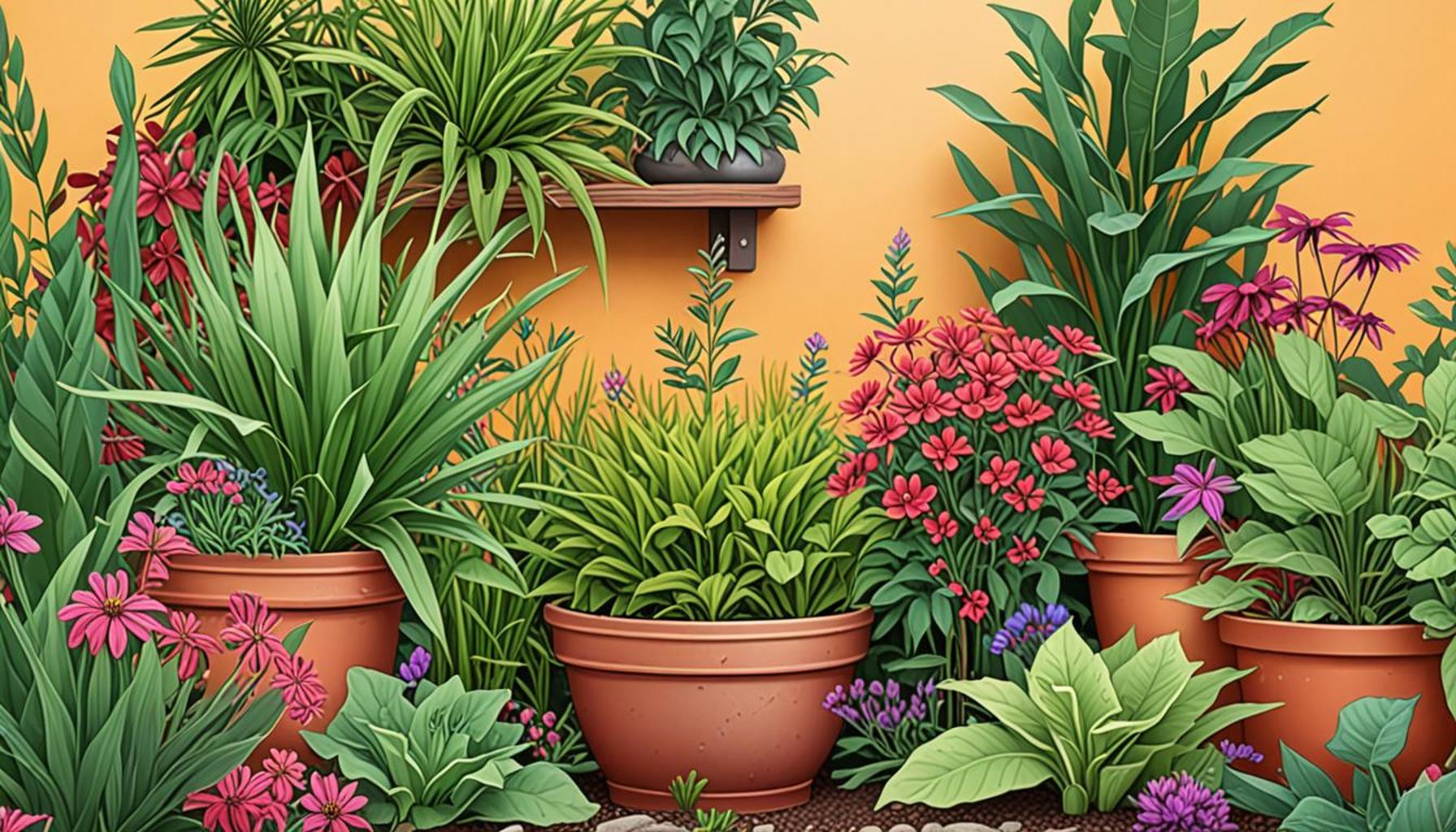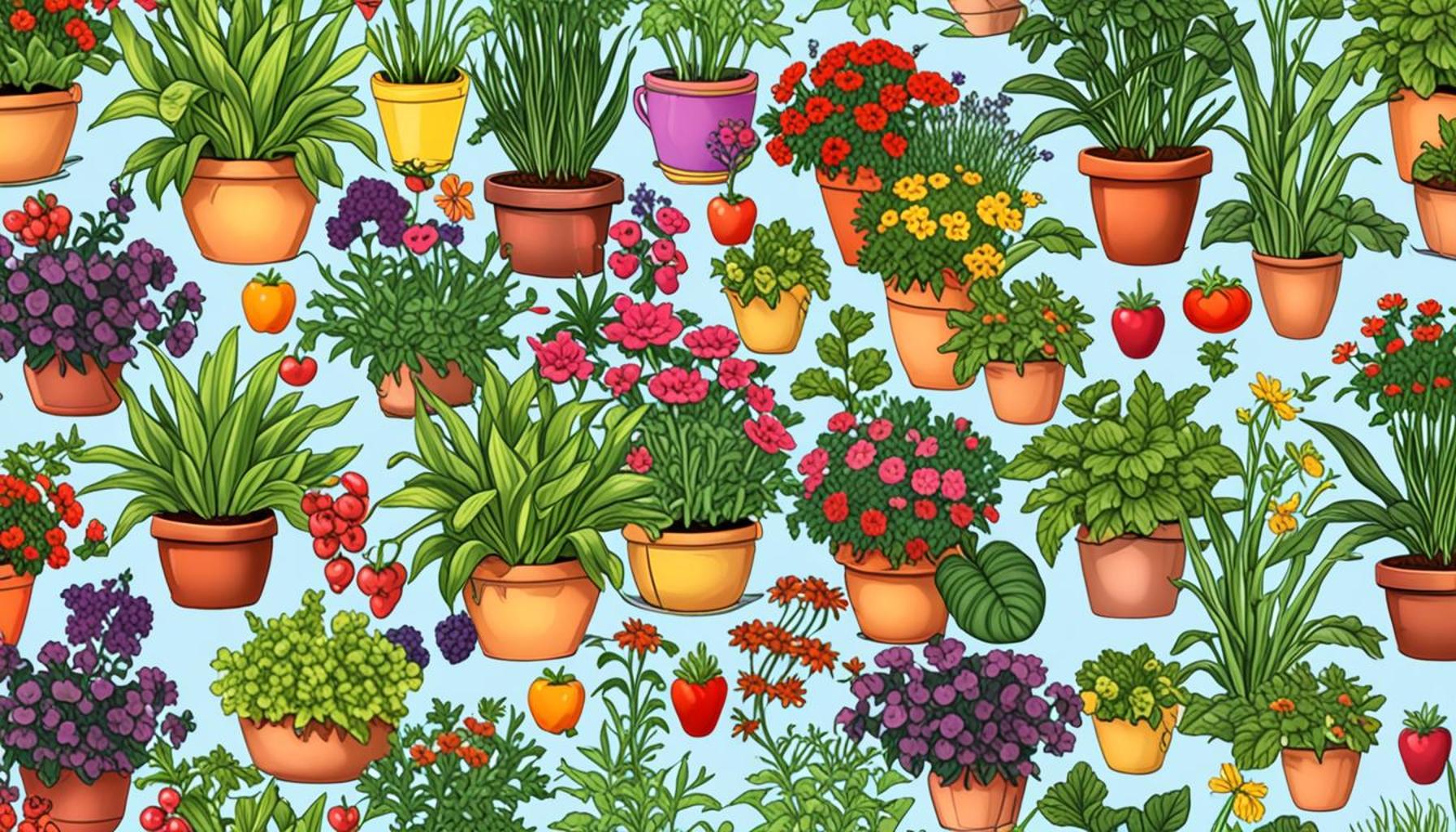How to Choose the Right Plants for Your Local Climate

Understanding Your Local Climate
Choosing the right plants for your garden can be a daunting task, especially when climate plays a crucial role in plant health. Familiarizing yourself with your local environment is essential for creating a thriving garden. Consider these key factors when planning your plant selection:
- Temperature ranges: Know the average highs and lows in your region. For example, if you live in places like the Midwest, hot summers and cold winters may dictate the types of perennials and woody plants you select. Researching the last frost date in spring and the first frost date in fall can also guide your planting schedule.
- Precipitation: Understand how much rain your area receives throughout the year. Regions such as the Pacific Northwest experience high rainfall, making them suitable for moisture-loving plants. In contrast, the arid conditions of the Southwest can necessitate drought-resistant species like cacti or succulents.
- Soil type: Different plants thrive in various soil conditions, so testing your soil can provide valuable insights. A simple soil test kit can reveal pH levels, nutrient availability, and soil texture, informing whether your garden will support heavy feeders like tomatoes or more resilient plants such as lavender.
In the United States, climate zones vary tremendously, from the arid deserts of the Southwest to the humid subtropics of the Southeast. Each zone presents distinct challenges and opportunities for gardening. Knowing your specific hardiness zone, which is determined by the average minimum temperature in your area, can help you identify what plants can survive the winter chill. For instance, zones like 9 and 10 in Southern Florida are ideal for tropical plants, while zones like 4 and 5, common in parts of the Northeast, are better suited for cold-hardy varieties like hostas or daylilies.
Why It Matters
Choosing plants that are aligned with your local climate can result in:
- Less maintenance: Fewer pests and diseases to manage. Native plants are often adapted to the local pests and diseases, making them more resilient and easier to care for.
- Water efficiency: Reduction in irrigation needs through native plants. By selecting species that are naturally adapted to your area, you can create a garden that requires less supplemental watering, ultimately leading to lower water bills.
- Better adaptation: Plants that naturally thrive will grow quicker and healthier. Understanding which plants are native or well-adapted to your area can result in a more robust garden with less effort.
Embrace the journey of discovering which plants best fit your local climate; it can be an enlightening experience that enhances your garden’s beauty and sustainability. Researching local gardening resources, consulting with experienced local gardeners, or visiting local botanical gardens can provide additional insights and inspire your plant selections. Ultimately, a well-planned garden that respects local climate conditions not only flourishes but also contributes positively to the local ecosystem.
DISCOVER MORE: Click here for safe pest deterrent solutions
Assessing Microclimates
Once you’ve grasped your broader local climate characteristics, it’s time to delve deeper into what are often overlooked aspects: microclimates. These localized variations in climate can significantly influence plant performance and garden success. Even within your own backyard, factors such as elevation, shade from structures or trees, and wind patterns can create unique microclimates.
To effectively evaluate microclimates, consider the following:
- Sun Exposure: Observe how much sunlight different parts of your garden receive throughout the day. Areas that receive full sun (6-8 hours) are great for sun-loving plants, while shaded spots can be ideal for shade-tolerant species. Urban environments, with their concrete and buildings, can often create heat islands, affecting temperature and humidity levels.
- Drainage: Some niches in your landscape might retain water better than others. Areas that collect water or have poor drainage can be perfect for wetland plants, whereas well-drained patches can support rock garden plants or xerophytes that thrive in drier conditions.
- Wind Protection: Locations shielded from harsh winds can nourish tender plants that might struggle in open, gusty areas. Consider using natural barriers or strategically placing taller plants to serve as windbreaks.
As you assess these microclimates, you’ll begin to identify areas within your garden that could support various plant communities. For instance, the southern exposure might host warm-loving herbs like basil or oregano, while a cool, breezy corner could be home to delicate ferns.
Utilizing Local Resources
Leverage regional resources to guide your plant selection. Many cities and towns have local agricultural extension offices, horticultural societies, or garden clubs that can offer invaluable insights applicable to your specific area. These organizations often conduct workshops or provide documentation focused on native plants and the best regional gardening practices. Visiting local nurseries can be equally enlightening; staff members typically have a wealth of knowledge about which plants flourish nearby and can help tailor your selections to your precise conditions.
Furthermore, engaging with a community of local gardeners can provide first-hand experiences that books or online resources might not cover. Discussion forums, social media groups, or gardening workshops can be excellent platforms to share tips and tricks specific to your climate zone.
Ultimately, understanding microclimates and tapping into local resources will fine-tune your approach to plant selection. By equipping yourself with this detailed knowledge, you can design a garden that not only thrives but also resonates with the natural beauty of your local climate. As you embark on this journey, remember that gardening is a process of experimentation, adjustment, and learning. Embrace each season as an opportunity to enhance your green space.
| Plant Varieties | Key Characteristics |
|---|---|
| Native Plants | Adapted to local climate; low maintenance |
| Drought-resistant Plants | Conserves water; thrives in dry conditions |
| Seasonal Plants | Bloom at specific times; offer seasonal interest |
| Frost-tolerant Varieties | Survive cold temperatures; ideal for colder climates |
Choosing the right plants for your local climate is vital to achieving a thriving garden. Understanding the various plant varieties available can significantly impact your gardening success and sustainability. By selecting native plants, you not only reduce maintenance but also contribute to preserving local biodiversity. In areas prone to dry spells, drought-resistant plants are essential as they require less water and can withstand harsh conditions, making them ideal for gardeners who want to conserve resources.Additionally, consider the aesthetic appeal of seasonal plants. These plants can add color and vibrancy at different times of the year, enriching your garden’s visual appeal. If you reside in regions where cold snaps are common, incorporating frost-tolerant varieties ensures that your garden remains resilient even during colder months. By diversifying your selections based on climate needs, you create sustainable and beautiful spaces in your landscape.
DISCOVER: Click here to learn about common garden pests
Exploring Plant Hardiness Zones
Understanding your local climate is intrinsically linked to knowledge of plant hardiness zones. The United States Department of Agriculture (USDA) divides the country into regions based on average minimum winter temperatures, helping gardeners ascertain which plants are most likely to thrive in their area. These zones range from Zone 1 (coldest) to Zone 13 (warmest), providing a framework for identifying suitable plants.
To effectively utilize hardiness zones, determine your specific zone by consulting the USDA plant hardiness zone map. Once identified, cross-reference this with plant tags or gardening resources. Most plants will indicate their hardiness zone, offering crucial insight into whether they’ll withstand your local climate’s winter chill. For example, the beloved Japanese maple typically grows well in zones 5 to 8, while the resilient cacti flourish in the warmer zones 9 to 11.
Understanding Soil Conditions
Another critical factor in choosing the right plants is an understanding of your local soil conditions. Soil varies significantly in terms of drainage, pH, and fertility, and these characteristics can dictate plant success. Conducting a simple soil test can unveil your soil’s composition, allowing you to amend it appropriately to suit specific plant requirements. For instance, a soil rich in organic matter may serve leafy greens and flowering plants well, whereas sandy soil may be ideal for drought-tolerant varieties.
Moreover, native plants often adapt well to local soil conditions, typically requiring less care than imported species. They play an essential role in preserving local ecosystems, providing habitat for wildlife and contributing to biodiversity. By selecting native plants that are already accustomed to your soil type and climate, you can cultivate a thriving garden with lower maintenance, like the resilient coneflower or black-eyed Susan.
Seasonal Considerations
As you ponder your plant choices, don’t forget to factor in seasonal variations. Different plants provide beauty and utility across various seasons, supporting a dynamic garden all year round. Early spring-blooming bulbs like daffodils can usher in the season’s warmth, while vibrant summer blooms such as zinnias keep the color alive until fall. By selecting plants that have a staggered blooming schedule, you’ll ensure that your garden remains visually appealing throughout the year.
In the autumn, incorporate trees and shrubs that showcase fall foliage, such as the Maple, which provides a stunning display of color. Additionally, consider winter interest plants that can transform a barren landscape; evergreens like pines and spruces provide structure and vibrancy even in the coldest months, extending the joy of your garden’s aesthetic.
By comprehensively evaluating your plants’ hardiness zones, soil conditions, and seasonal aspects, you help to set the foundation for a flourishing garden that can withstand the test of time. Embrace these insights to create a vibrant and resilient green space that reflects the beauty of your local climate.
DON’T MISS: Click here for essential tips
Conclusion: Cultivating a Flourishing Garden for Your Climate
In conclusion, choosing the right plants for your local climate is an art that combines knowledge, observation, and a bit of experimentation. By understanding plant hardiness zones, you can select varieties that will thrive in your specific temperature range, ensuring a higher chance of success. Conducting a thorough assessment of your soil conditions is equally crucial, as this directly influences your plants’ health and growth potential. A simple soil test can save you a world of difficulty down the road, helping you make informed amendments to optimize plant performance.
Additionally, being mindful of the seasonal changes in your area can help you curate a garden that delights the senses year-round. Whether you’re drawn to vibrant spring blooms or the striking contrast of autumn leaves, a diverse selection of plants can provide beauty and interest through every season. Emphasizing native species not only complements your garden’s resilience but also contributes to the local ecosystem, fostering biodiversity.
Ultimately, the quest to create a thriving garden tailored to your local climate is a rewarding endeavor. By arming yourself with the tools to make educated plant choices, you not only enhance your outdoor space but also engage in a sustainable practice that nurtures both nature and your community. From the deep-rooted oaks to the hearty herbs, let your landscape tell a story reflective of your region’s unique character and charm. Dive in, explore, and enjoy the journey of cultivating your green haven tailored just for you.



